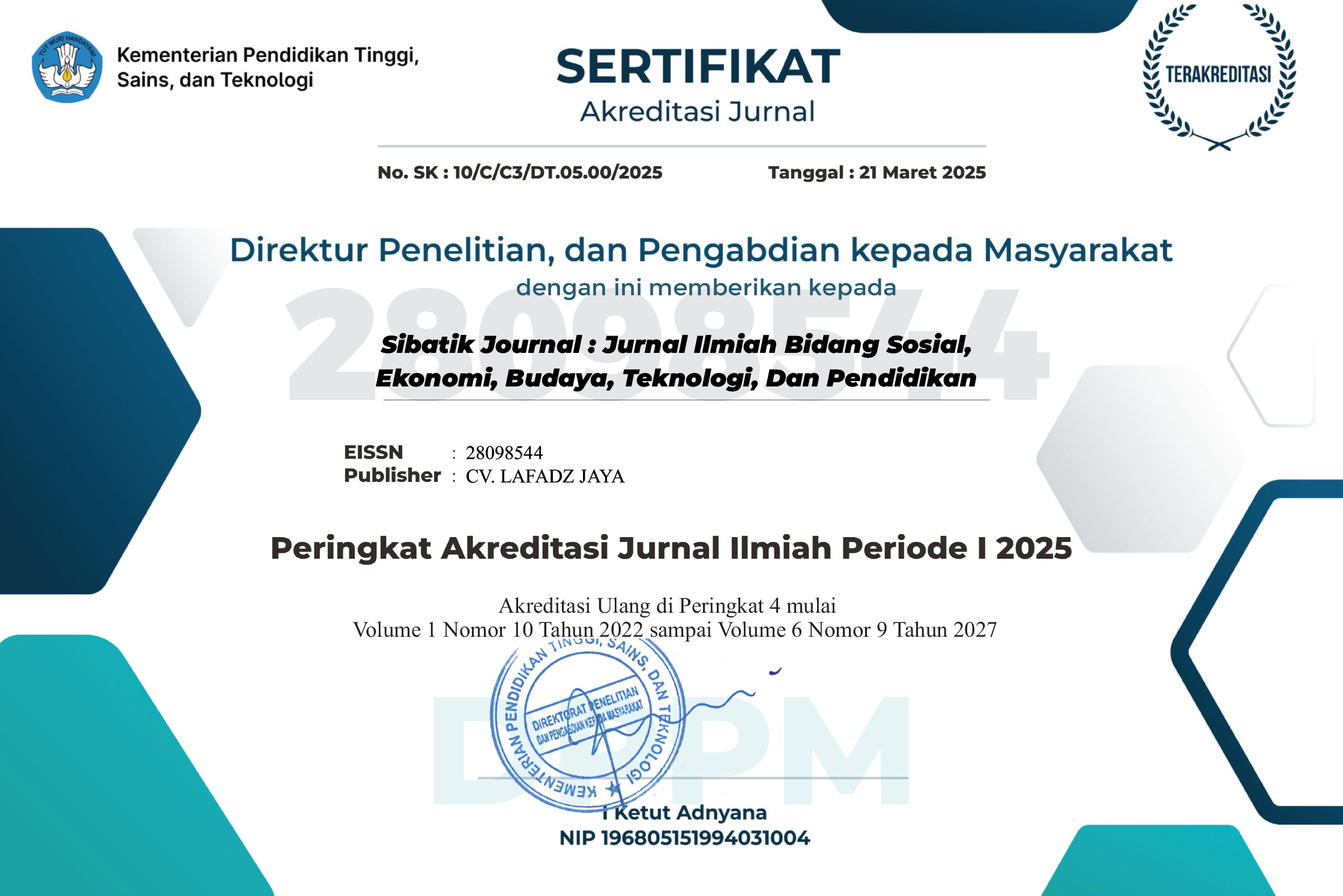IMPACT OF DIGITAL BANKING ON BROADENING INVESTMENT ACCESS: BASIS FOR ENHANCED FINANCIAL DECISION-MAKING PLAN
DOI:
10.54443/sibatik.v3i9.2315Published:
2024-08-31Downloads
Abstract
The advent of digital banking has ushered in a transformative era in the financial services industry, significantly broadening access to investment opportunities and reshaping financial decision-making processes. This research investigates the impact of digital banking on expanding investment access and its implications for enhanced financial decision-making practices. Through a comprehensive review of existing literature and analysis of primary data, this study examines the mechanisms through which digital banking platforms facilitate investment access for diverse demographic groups and geographical regions. Moreover, it explores the role of digital banking technologies in empowering individuals with tools for informed decision-making, risk management, and portfolio diversification. Employing a descriptive methodology, data were collected from 100 respondents via structured questionnaires and supplemented by random interviews with employees, and clients. Statistical techniques such as percentage, weighted mean, Likert scale, ANOVA and ranking were used for data analysis. Key findings highlight the profound influence of digital banking on democratizing investment participation, reducing barriers to entry, and promoting financial inclusion. Furthermore, the study elucidates the potential benefits and challenges associated with the adoption of digital banking in optimizing investment strategies and fostering financial literacy among consumers. By knowing the transformative effects of digital banking on investment accessibility and decision-making dynamics. This research contributes to the evolving discourse on financial innovation and its implications for inclusive economic growth in the digital age. The study provided several recommendations. These included Enhancing digital platforms, Diversifying investment options, Educational initiatives, Security measures, Geographic inclusivity, Transaction cost reduction, and Regular communication.
Keywords:
Digital Banking Investment Access Financial Decision Plan Special Economic Zones Digital LiteracyReferences
Carbo-Valverde, S., et al. (2020). Cybersecurity in the Financial Services Industry: Threats, Strategies, and the Role of Regulation. Journal of Banking and Finance, 113, 105–124.
Creswell, J. W., & Creswell, J. D. (2018). Research Design: Qualitative, Quantitative, and Mixed Methods Approaches (5th ed.). SAGE Publications.
Ebimoghan, E. J. (2021). Financial Literacy and Digital Banking: The New Frontier. Journal of Financial Technology, 45(2), 112–132.
Etikan, I., Musa, S. A., & Alkassim, R. S. (2016). Comparison of Convenience Sampling and Purposive Sampling. American Journal of Theoretical and Applied Statistics, 5(1), 1–4.
Gfrerer, C., Fritsch, B., & Stucken, S. (2020). The Role of Automation in Investment Decision-Making: A Critical Review. Financial Markets Review, 16(4), 435–454.
Klapper, L. (2023). The Future of Robo-Advisors: Personalized Wealth Management Through AI. Journal of Economic Perspectives, 37(1), 55–72.
Kitsios, F., & Kamariotou, M. (2021). Digital Transformation in Financial Services: Opportunities and Challenges. Journal of Strategic and International Business, 33(2), 53–67.
Litvishko, E., et al. (2020). Small-Scale Investments and the Digital Economy: Emerging Markets Perspective. Emerging Economies Review, 18(3), 271–286.
Musabegović, M., Jović, M., & Stošić, S. (2021). Financial Literacy and Digital Investment Tools: A Comparative Analysis. Eastern European Journal of Financial Studies, 29(1), 89–103.
Ozili, P. K. (2022). Blockchain Technology and the Reduction of Transaction Costs in Banking. Journal of Digital Finance, 3(2), 71–82.
Pham, T. M., et al. (2022). Balancing Innovation and Regulation in the Age of Digital Banking: A Global Perspective. International Journal of Financial Regulation, 11(4), 56–75.
Purnamasari, L., et al. (2021). Digital Banking Platforms and Financial Literacy: A Case Study of Indonesian Users. Journal of Financial Education, 23(4), 153–168.
Santos, M. D. (2021). Regulation and Consumer Protection in Digital Banking: Challenges and Solutions. International Journal of Bank Regulation, 19(3), 102–120.
Siedlecki, S. L. (2020). Understanding Descriptive Research Designs and Methods. Clinical Nurse Specialist, 34(1), 44–46.
Sindhi, V. K. (2021). Digital Banking in India: A Literature Review. Punjabi University Patiala, India.
Tran, P. T., & Le, T. T. H. (2023). Digital Transformation of the Banking Industry in Developing Countries. International Journal of Professional Business Review, 8(5), 1–24. https://doi.org/10.26668/businessreview/2023.v8i5.1503
Wadesango, N., & Magaya, B. (2021). Literature Review on the Impact of Digital Banking Services on Performance of Commercial Banks. Afrika Focus, 11(2), 63–77. https://hdl.handle.net/10520/ejc-aa_affrika1_v11_n2_a8
Wu, M., & Bernard, J. B. (2022). Assessing the Relationship Between Internet Banking and Investment Decision Through Sustainability and Competitive Advantage: Evidence From Congolese Banks. Frontiers in Psychology, 13, 869646. https://doi.org/10.3389/fpsyg.2022.869646
License
Copyright (c) 2024 Mark Acezel Manlapaz, Dr. Erwin Quendangan

This work is licensed under a Creative Commons Attribution 4.0 International License.












